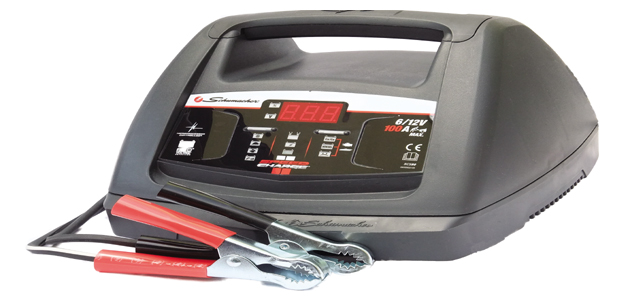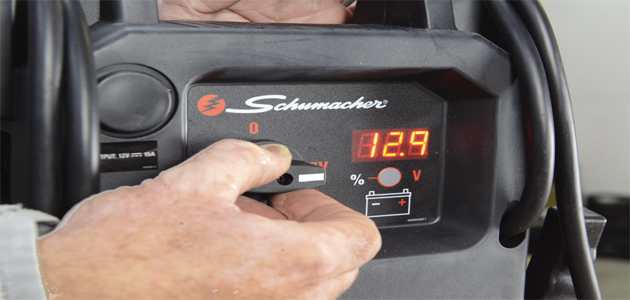
Over the coming months, it’s inevitable that your attention will be drawn to breakdowns and faults caused by batteries appearing to fail. Now is as good a time as ever then to refresh your knowledge about the latest developments in this area.
PPE requirements
Firstly, it’s important to keep yourself protected when working with batteries. To achieve this, remember to wear safety glasses and workwear, as split or splashed acid is very dangerous.
Need a boost?
If a battery is flat and the vehicle is at the roadside, then the most useful tool to use is a booster pack. These are safer and easier to use than jump leads, which can cause spikes and sparks as well as damage to the vehicle’s electronics. As a minimum, a booster pack should be equipped with an ‘On/Off’ switch and reverse polarity alarm to warn of any reverse polarity or connection issues.
Ideally, you should opt for a booster that is fitted with a Hawker Enersys battery; these batteries give more power over a longer period to allow multiple starts on a single charge.
Other features to look out for are a display that shows the percentage of charge of the internal battery and digital voltage readout. This will also allow you to see the charging voltage of the alternator once the engine has started, to help diagnose why the battery went flat in the first place.

With the engine running, leave the booster pack connected for a few seconds to allow the alternator to start charging, then switch off the booster and disconnect. This will prevent sparks and potential damage to the charging system and to the vehicle’s ECUs.
Alternators are not designed to charge ‘flat’ batteries, and even the longest drive will not properly recharge the battery. The only way to reliably charge the battery, therefore, is to use a battery charger.
Make sure you choose a charger that is right for the battery; most of the older chargers in use in workshops are not suitable for the latest battery technologies. Before starting, you should make sure that the charger is set to the correct battery type – most automotive batteries are ‘sealed’ or VRLA (Valve Regulated Lead Acid) types.
In this category, there are two further type variations: Calcium (now considered conventional) and AGM/EFB (Absorbed Glass Matt/Enhanced Flooded Battery). Additionally, there are some GEL batteries in the market, but they are rare and often confused with AGM.
Charging with the wrong type of charger could damage the battery and, even worse, the technician. Time is often a critical factor in a workshop so using a charger equipped with the Schumacher SpeedCharge™ system will save some valuable minutes.

Testing time
Battery testers are simple to use and are relatively low cost, the simplest and safest of which are the electronic conductance or microload types. These measure the internal resistance of the battery and give much more accurate results than the older, uncontrolled load testers. A benefit of using an electronic tester with a printer is that you can keep the printout to show the customer the diagnosis.
Avoiding memory loss
If the battery needs to be removed or disconnected then I would always recommend using a vehicle memory saver. This simple tool can save you a great deal of time and money by keeping all the vital engine diagnostic, security and sensor information alive while the power is disconnected.
Always check the battery terminals for security and it is a good idea to use a terminal bush to clean both the battery post and connector, to ensure the best possible connection.
Picking a programmer
The final piece of equipment that you will need for some modern cars is a re-programming tool. The vehicle system needs to be told that the battery has been replaced, and the size and type of battery that has been fitted. The charging system can then adjust its output to take into account the new battery. Failure to do this can result in a warning light on the dashboard, and the need for a visit to a dealer to rectify the fault.









